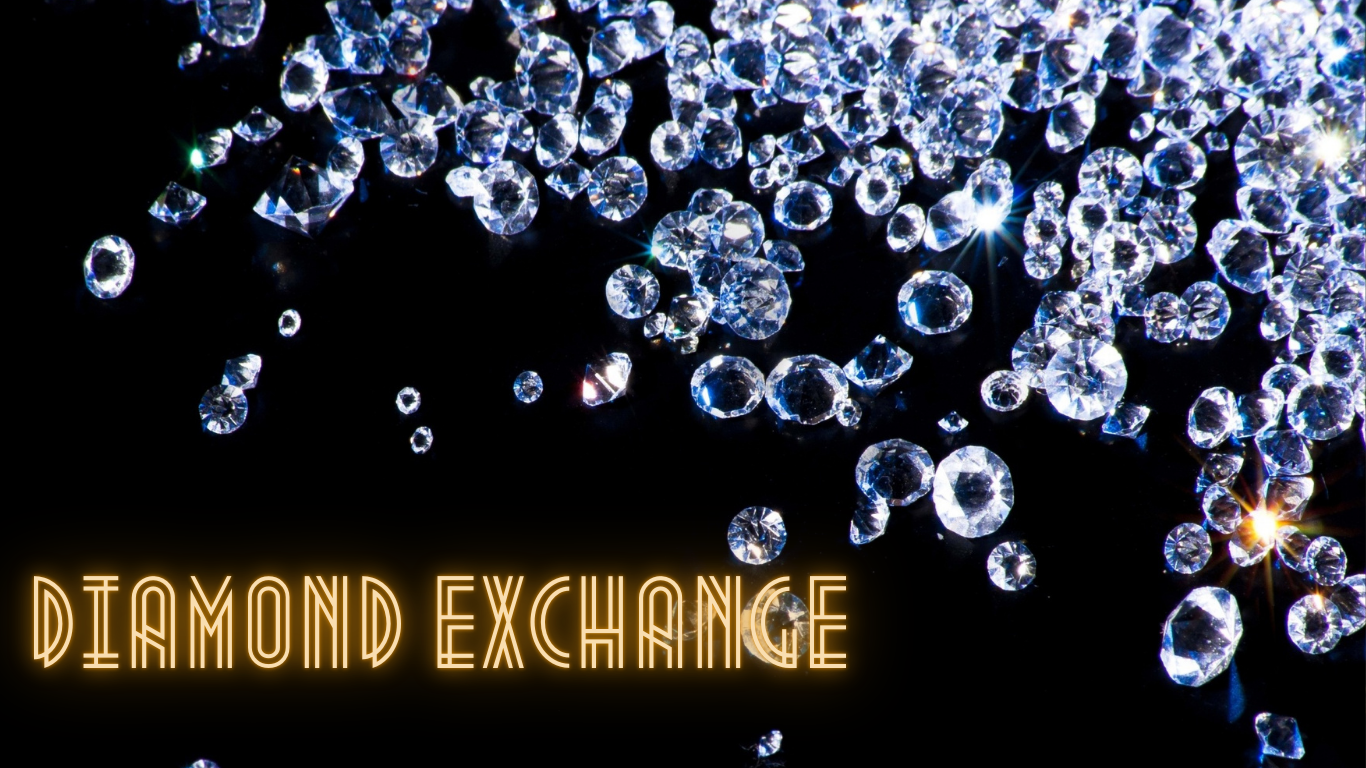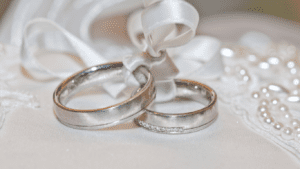Introduction
Diamonds are more than just precious stones; they are symbols of luxury, love, and investment. Whether you’re looking to buy, sell, or trade diamonds, understanding the intricacies of the diamond exchange process is crucial. This comprehensive guide will walk you through everything you need to know about diamond exchanges, from selecting the right one to understanding the buying and selling processes, ethical considerations, and industry trends.
What is a Diamond Exchange?
A diamond exchange is a marketplace where diamonds are bought, sold, and traded. These exchanges can be physical locations or online platforms, providing a range of services such as appraisal, certification, custom jewelry design, and more. Prominent examples include Diamond Exchange Houston and others around the world that cater to both individual and wholesale customers.
Why Use a Diamond Exchange?
1. Expertise and Trust:
Diamond exchanges are typically staffed by experienced gemologists and jewelers who can provide reliable information and fair pricing. For example, Diamond Exchange Houston has garnered high praise for its knowledgeable staff and exceptional customer service.
2. Variety:
Access to a wide array of diamonds, from loose stones to finished jewelry pieces.
3. Ethical Practices:
Many diamond exchanges emphasize ethically sourced diamonds, ensuring responsible practices from mine to market.
4. Competitive Pricing:
By eliminating middlemen, exchanges often offer more competitive prices than traditional retail stores.
Choosing the Right Diamond Exchange
When selecting a diamond exchange, consider the following factors:
1. Reputation and Reviews:
Research customer reviews and testimonials. Diamond Exchange Houston, for instance, has high ratings for customer satisfaction and quality.
2. Services Offered:
Ensure the exchange provides the services you need, whether it’s custom jewelry design, appraisals, or diamond buying/selling.
3. Certification:
Look for exchanges that provide certified diamonds from reputable organizations like GIA or AGS.
4. Transparency:
Choose exchanges that offer transparent pricing and policies, ensuring you understand every aspect of your transaction.
The Process of Buying Diamonds
Buying a diamond is a significant investment, and the process can be daunting. Here’s a step-by-step guide to ensure you make an informed decision:
1. Understand the 4 Cs:
The value of a diamond is determined by its Cut, Color, Clarity, and Carat weight. Each of these characteristics affects the diamond’s appearance and price.
- Cut: The cut of a diamond affects its brilliance and sparkle. A well-cut diamond reflects light beautifully.
- Color: Diamonds range from colorless to shades of yellow and brown. The less color a diamond has, the higher its value.
- Clarity: This measures the presence of internal or external imperfections. Diamonds with fewer inclusions are more valuable.
- Carat Weight: This measures the size of the diamond. Larger diamonds are rarer and thus more expensive.
2. Set Your Budget:
Decide how much you are willing to spend. Remember that the 4 Cs interact with each other, and a balance between them will determine the overall value and appearance of the diamond.
3. Choose a Reputable Dealer:
Work with a well-reviewed diamond exchange that offers certified diamonds. For example, Diamond Exchange Houston has an excellent reputation for its quality and service.
4. Review Certifications:
Ensure that the diamond comes with a certification from a recognized gemological institute such as GIA, AGS, or IGI. This certification provides a detailed assessment of the diamond’s quality.
5. Consider Customization:
Many exchanges offer custom jewelry services. This allows you to create a unique piece that reflects your personal style.
The Process of Selling Diamonds
Selling a diamond can be equally complex. Here’s a guide to help you navigate the process:
1. Get an Appraisal:
Have your diamond appraised by a professional to determine its current market value. This is crucial for setting a realistic price.
2. Research the Market:
Understand the current demand and pricing for diamonds similar to yours. This will help you set a competitive price.
3. Choose a Selling Method:
Decide whether to sell directly to a diamond exchange, consign, or use an auction platform. Each method has its advantages and disadvantages.
- Direct Sale: Selling directly to a diamond exchange can be quick and straightforward. However, you may not get the highest possible price.
- Consignment: This involves placing your diamond with a jeweler or exchange who will sell it on your behalf. You may receive a higher price, but it can take longer to sell.
- Auction: Selling at auction can be exciting and potentially lucrative, but it’s also risky, as prices can vary widely.
4. Gather Documentation:
Collect all relevant documentation, including certifications, appraisals, and any original purchase receipts. This adds credibility to your sale and can help you get a better price.
5. Negotiate:
Be prepared to negotiate with potential buyers. Understanding the value of your diamond and having a firm price in mind will help you get the best deal.
Ethical Considerations in the Diamond Industry
Ethical sourcing is a growing concern in the diamond industry. Here are some key points to consider:
1. Conflict Diamonds:
Also known as blood diamonds, these are diamonds mined in war zones and sold to finance armed conflict. The Kimberley Process Certification Scheme (KPCS) aims to prevent conflict diamonds from entering the market by certifying the origin of rough diamonds.
2. Sustainable Practices:
Many diamond exchanges emphasize sustainable and eco-friendly practices. This includes ensuring that mining operations do not harm the environment and that workers are treated fairly.
3. Lab-Grown Diamonds:
These diamonds are created in a laboratory and have the same physical and chemical properties as natural diamonds. They offer an ethical alternative, as they do not involve mining and are often less expensive.
4. Certification and Transparency:
Working with diamond exchanges that provide certified diamonds ensures transparency and ethical practices. Certifications from reputable organizations like GIA or AGS provide assurance of the diamond’s quality and origin.
Diamond Certification
Certifications are crucial in the diamond industry. They provide an unbiased assessment of a diamond’s quality and are essential for both buying and selling. Here are the main certification bodies:
1. GIA (Gemological Institute of America):
GIA is one of the most respected and widely recognized certification bodies. It provides detailed reports on a diamond’s Cut, Color, Clarity, and Carat weight.
2. AGS (American Gem Society):
AGS is known for its strict grading standards and focus on diamond cut. Its reports include a detailed analysis of a diamond’s proportions and light performance.
3. IGI (International Gemological Institute):
IGI is another well-respected certification body, offering comprehensive reports on a diamond’s quality. IGI certifications are often used for both natural and lab-grown diamonds.
Custom Jewelry Design
Creating custom jewelry is an exciting process that allows you to design a unique piece that reflects your personal style. Here’s a step-by-step guide to custom jewelry design at a diamond exchange:
1. Consultation:
The process begins with a consultation with a designer. You’ll discuss your vision, preferences, and budget. The designer will offer suggestions and show you various options for stones and settings.
2. Design Approval:
After the initial consultation, the designer will create sketches or digital renderings of the proposed design. You’ll review these and make any necessary changes. Once you’re satisfied with the design, you’ll give your approval.
3. Creation:
The approved design is then brought to life by skilled craftsmen. This involves selecting the perfect stones, crafting the setting, and assembling the piece. This stage requires precision and expertise to ensure the final product meets high standards of quality and aesthetics.
4. Final Review:
Once the piece is completed, you’ll have the opportunity to inspect it and ensure it meets your expectations. Any final adjustments can be made at this stage. Custom jewelry design allows you to create a one-of-a-kind piece that holds personal significance and matches your style perfectly.
Trends in the Diamond Industry
1. Lab-Grown Diamonds:
These diamonds are gaining popularity due to their ethical and environmental benefits. Lab-grown diamonds have the same physical and chemical properties as natural diamonds but are generally more affordable and free from ethical concerns associated with mining.
2. Vintage and Antique Styles:
Many buyers are drawn to the charm and history of vintage jewelry. These pieces often feature intricate designs and craftsmanship that are not commonly found in modern jewelry. Vintage styles are making a strong comeback in engagement rings and other fine jewelry.
3. Customization:
Personalized jewelry remains popular, with customers seeking unique pieces that reflect their individuality. From custom engagement rings to bespoke necklaces and bracelets, personalization is a major trend in the diamond industry.
4. Sustainability:
Increasingly, consumers are prioritizing eco-friendly and ethically sourced diamonds. This trend is driving demand for lab-grown diamonds and pushing the industry towards more sustainable practices. Companies that emphasize transparency and ethical sourcing are gaining favor with conscious consumers.
Conclusion
Navigating the world of diamond exchanges can be complex, but with the right knowledge and guidance, you can make informed decisions whether you are buying, selling, or creating custom jewelry. Understanding the importance of ethical practices, certification, and current industry trends will ensure you get the best value and quality for your investment. Remember to choose reputable exchanges like Diamond Exchange Houston that offer transparency, expertise, and excellent customer service.
FAQs on Diamond Exchange
Q1: What is a diamond exchange?
A: A diamond exchange is a marketplace where diamonds are bought, sold, and traded. These exchanges can be physical locations or online platforms, offering services like appraisal, certification, and custom jewelry design.
Q2: Why should I use a diamond exchange?
A: Diamond exchanges provide expertise, a wide variety of diamonds, ethical sourcing, and competitive pricing. They are often staffed by experienced gemologists and jewelers, ensuring fair pricing and quality assurance.
Q3: How do I choose the right diamond exchange?
A: Consider factors such as the exchange’s reputation, customer reviews, services offered, certification availability, and transparency in pricing. Researching and selecting a well-reviewed exchange is crucial.
Q4: What are the 4 Cs of diamonds?
A: The 4 Cs are Cut, Color, Clarity, and Carat weight. These characteristics determine a diamond’s value and appearance. Understanding the 4 Cs helps in making informed buying decisions.
Q5: How do I sell a diamond?
A: To sell a diamond, get it appraised, research the market, choose a selling method (direct sale, consignment, or auction), gather documentation, and be prepared to negotiate. Working with a reputable diamond exchange can facilitate the process.
Q6: What are conflict diamonds?
A: Conflict diamonds, or blood diamonds, are mined in war zones and sold to finance armed conflict. The Kimberley Process Certification Scheme (KPCS) aims to prevent these diamonds from entering the market by certifying their origin.
Q7: What is the difference between natural and lab-grown diamonds?
A: Lab-grown diamonds have the same physical and chemical properties as natural diamonds but are created in a laboratory. They are often more affordable and free from ethical concerns associated with mining.
Q8: Why are diamond certifications important?
A: Certifications from recognized gemological institutes like GIA, AGS, and IGI provide an unbiased assessment of a diamond’s quality, ensuring transparency and trust in both buying and selling processes.
Q9: Can I design custom jewelry at a diamond exchange?
A: Yes, many diamond exchanges offer custom jewelry design services. This involves consulting with a designer, approving a design, and having skilled craftsmen create the piece according to your specifications.
Q10: What are the current trends in the diamond industry?
A: Current trends include the rise of lab-grown diamonds, vintage and antique styles, personalized jewelry, and a focus on sustainability and ethical sourcing.




